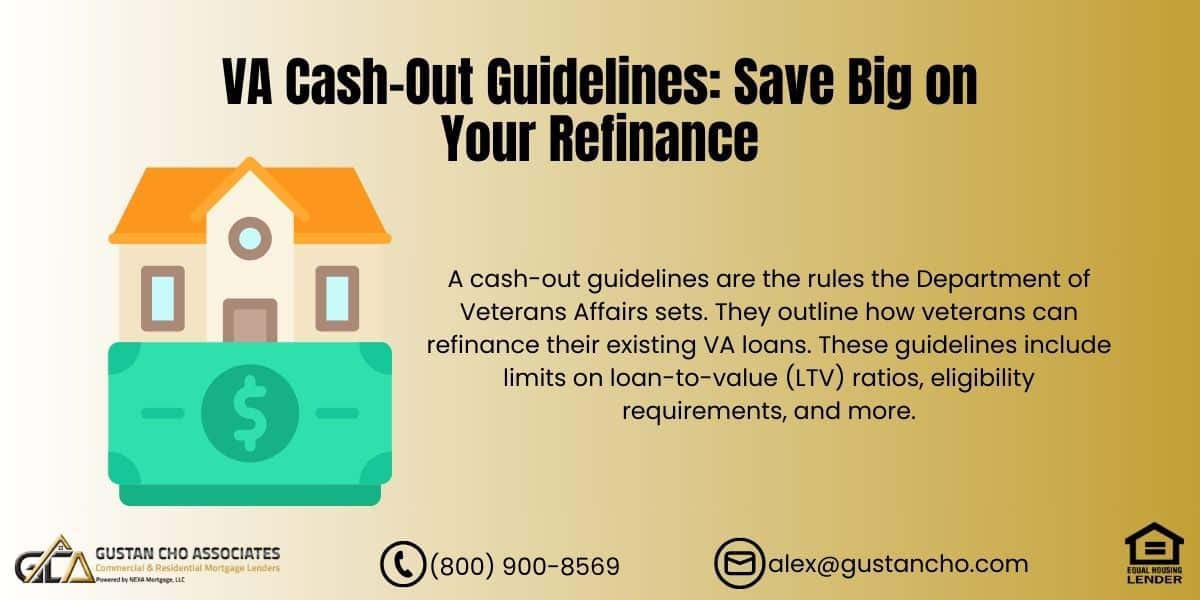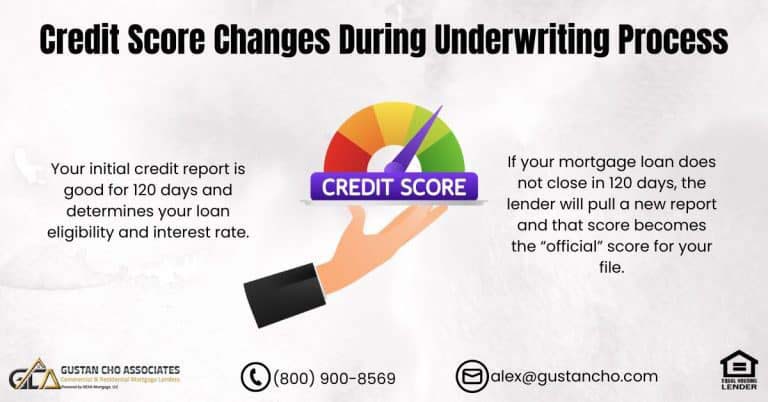In this post, we’re going to talk about the new rules for VA cash-out refinancing in 2024. The real estate market has been up and down. This led to the Department of Veterans Affairs to update the VA cash-out guidelines. This info is super important for veterans thinking about refinancing.
Understanding VA Loans
VA loans are a fantastic deal if you’re in the military, whether still serving or retired. You don’t need to put money down to buy a house. The interest rates are low, and you don’t have to pay extra for mortgage insurance. But remember, these loans are for folks in the U.S. military. Before getting into the details, learn the basics. It’s important to get the basics, especially about VA cash-out guidelines.
Latest News on VA Cash-Out Guidelines
On February 15, 2019, the Department of Veterans updated the VA cash-out guidelines. Now, you can only borrow up to 90% of your home’s value instead of 100%. This change helps veterans avoid taking on too much debt, especially in an unpredictable housing market.
Types of VA Refinance Loans
Knowing your options for VA refinance is key to making the right choice for your home loan. Here’s a simpler breakdown:
- VA IRRRL
- Type 1 VA Cash-Out Refinance
- Type 2 VA Cash-Out Refinance
Understanding these options helps you make the best decision for your situation.
VA IRRRL
The VA IRRRL stands for Interest Rate Reduction Refinancing Loan. It is a handy option for those who want to refinance their existing VA loan to snatch a lower interest rate. The cool part is you do it without pulling any cash out.
It’s about trimming down your monthly payments, making it easier on your pocket. This plan is pretty straightforward – it’s all about saving you money every month.
While we’re touching on refinancing options, note that this isn’t about the VA cash-out guidelines. That’s a different route altogether if you’re looking to get some cash in hand from your home’s equity. Think of VA IRRRL as a financial tweak to lock in a better rate. With a VA IRRRL, you can keep more money in your wallet each month without the complexity of cashing out.
Ready to Tap Into Your Home’s Equity? Get a VA Cash-Out Refinance Today!
Contact us today to learn how a VA cash-out refinance can benefit you.
Type 1 Cash-Out Refinance
Type 1 Cash-Out Refinance is a kind of loan where the new loan amount you’re borrowing is less than what you need to pay off your existing loan. This includes the cost for the VA funding fee, which is a part of the process. But, you need to make sure this whole amount doesn’t go over the appraised value or worth of your property. Essentially, it follows the VA cash-out guidelines. This way, you’re not borrowing more than what’s necessary.
Type 2 Cash-Out Refinance
Type 2 Cash-Out Refinance means you get a new loan that’s bigger than the one you currently have. It covers the original loan’s balance and the closing costs. But, if the new loan amount goes over the value of your home, you’ll have to cover the difference yourself.
Loan-to-Value (LTV) Requirements
VA cash-out guidelines have a big update on how much loan you can take based on your home’s value. Starting February 15, 2019, the VA says you can’t borrow more than 100% of your home’s value. So, if you’re refinancing and your home value is $200,000, that’s the most loan you can get.
Here’s an easy example:
If you want to refinance and add a funding fee of $6,600 on top of your $200,000 loan, making it $206,600, that’s no longer allowed. With these new rules for VA cash-out refinance, you would need to pay that $6,600 fee yourself, not add it to the loan. This keeps the borrowed amount at or below your home’s $200,000 value, sticking to the 100% limit.
How to Calculate Loan-to-Value
The loan-to-value ratio is a simple math problem. You take the total amount you’re borrowing, which includes any fees for getting the loan. Then you divide it by the property’s officially appraised value. This calculation shows if your loan fits within the VA cash-out guidelines.
Net Tangible Benefit Test
Under the new VA cash-out guidelines, you need to pass a test. This test is called the net tangible benefit test. It helps make sure the refinance helps the veterans. To pass this check, refinancing must offer at least one of these benefits:
- Get rid of monthly mortgage insurance payments.
- Shorten the loan term (for example, changing from a 30-year loan to a 20-year one).
- Get a lower interest rate.
- Have cheaper monthly payments.
- Increase the money veterans have left after all expenses.
- Provide a short-term loan for home improvements or repairs.
- Keep the loan amount to no more than 90% of the home’s value.
- Switch from a loan with changing rates to one with a fixed rate.
Seasoning Requirements
The VA cash-out guidelines also talk about how long you need to have had your loan before you can refinance it. This is known as seasoning requirements. Basically, the VA won’t back up a new refinance loan if your current one hasn’t been around for a bit. This rule is the same for both Type 1 and Type 2 refinance loans. Here’s what it means in simple terms:
- You need to have made your first loan payment at least 210 days ago.
- You should have made at least six monthly payments on your loan.
Fee Recoupment
The new VA cash-out guidelines key in on getting some of the money back from fees. This covers all the costs you paid when you got the loan. And includes closing costs and other fees. These cost needs to be made back within 36 months of closing the deal. The people giving out the loan have to make sure this happens. This rule, however, doesn’t count for things like taxes, insurance, and money put aside for future bills.
Looking to Use Your Home’s Equity? VA Cash-Out Refinancing Can Help!
Reach out now to find out how you can qualify for this great option and access your home’s value.
Why VA Loans Are Beneficial
VA loans are super helpful for veterans when buying a house. Here’s why:
- No Downpayment: You don’t need any money upfront for the down payment. Meaning you can get a house without saving for a big initial payment.
- No Mortgage Insurance: You skip the extra monthly cost of mortgage insurance. Unlike other home loans, VA loans don’t require private mortgage insurance (PMI), which saves you money every month.
- Competitive Interest Rates: You’ll probably get a lower interest rate than with other loans. This means cheaper monthly payments.
- Flexible Credit Requirements: They’re not so strict on credit scores. Even if your credit isn’t perfect, you can still qualify for a loan.
It’s worth mentioning this is what the VA cash-out guidelines are for. To help veterans refinance their homes and get some cash from the equity they’ve built up. This is another cool benefit that can come in handy.
Applying for a VA Cash-Out Refinance
If you’re thinking about getting money out of your house’s value with a VA refinance, here’s a simple way to do it:
- Check Eligibility: First, check if you qualify. Make sure you fit the rules for a VA loan.
- Gather Documentation: You’ll need stuff like proof you served, how much you make, and info on your house.
- Pick a Lender: Find someone who knows a lot about VA loans and is up to date with the VA cash-out guidelines.
- Complete the Application: Complete the form they give you with all the details they ask for.
- Appraisal: Your lender will get a pro to figure out how much your house is worth right now.
- Underwriting: The lender will look over all your info to make sure you and your loan fit both VA and their own rules.
- Closing: Once they give the thumbs up, you’ll need to sign some papers. Then the money you’re borrowing will be handed over according to the refinance agreement.
Working with a Knowledgeable Lender
Picking a lender who knows the ins and outs of VA cash-out guidelines. This is super important to ensure hassle-free refinancing. A smart lender will guide you through the new rules and make sure you snag the best deal for your loan.
Final Thoughts on the VA Cash-Out Guidelines
It’s really important to understand the VA cash-out guidelines. These rules were updated to ensure that you don’t borrow too much against your home. And that refinancing actually helps you out. Make smart choices about your mortgage by choosing a lender who knows these guidelines.
FAQs – VA Cash-Out Guidelines: Save Big on Your Refinance
- 1. What are the VA cash-out guidelines? VA cash-out guidelines are the rules the Department of Veterans Affairs sets. They outline how veterans can refinance their existing VA loans. These guidelines include limits on loan-to-value (LTV) ratios, eligibility requirements, and more.
- 2. How much can I borrow with a VA cash-out refinance? The updated VA cash-out guidelines allow you to refinance up to 90% of your home’s appraised value. The previous limit is 100%. This change is designed to help veterans avoid taking on too much debt.
- 3. Who is eligible for a VA cash-out refinance? Only active and retired members of the U.S. military are eligible. This includes veterans from the Army, Navy, Air Force, Marines, Coast Guard, and National Guard.
- 4. What is the difference between Type 1 and Type 2 VA cash-out refinance? Type 1 refinance means the new loan amount does not exceed the payoff amount of the existing loan. It includes the VA funding fee. A Type 2 refinance involves a new loan amount that exceeds the payoff amount. Any excess must be paid out of pocket if it goes over the home’s appraised value.
- 5. What are the seasoning requirements for a VA cash-out refinance? VA cash-out guidelines require that the existing loan must be seasoned. This means at least 210 days must have passed since the first payment. It requires at least six monthly payments on the loan being refinanced.
- 6. Can I include the VA funding fee in my new loan? The total loan amount, including the funding fee, cannot exceed the appraised value of the home. If it does, the veteran must pay the excess out of pocket.
- 7. What is the net tangible benefit test? The VA cash-out guidelines include a net tangible benefit test. This is to ensure that veterans benefit financially from refinancing.
- 8. How do I calculate the loan-to-value (LTV) ratio? Divide the total loan amount (including any funding fees) by the property’s appraised value. This calculation helps ensure the loan meets the VA cash-out guidelines.
- 9. What fees are included in the fee recoupment requirement? According to VA cash-out guidelines, all fees, including closing costs and loan expenses, must be recouped within 36 months from the closing date. This ensures that the refinance is financially beneficial over a reasonable period.
- 10. Why should I choose a VA cash-out refinance? A VA cash-out refinance can be a great option if you can access cash from your home’s equity. The VA cash-out guidelines ensure the process is safe and beneficial for veterans. Protections are set up to prevent over-leveraging and ensure financial gain.
Need more details or ready to go forward with a VA cash-out refinance? Touch base with Gustan Cho Associates. We’re pros at VA home loans and we’re here to guide you every step of the way. Give Alex Carlucci a call at 800-900-8569 or shoot us a text for a quicker reply. Or, if you prefer, send us an email at gcho@gustancho.com. We’re eager to help you with your VA cash-out refinance journey.
This blog about VA Cash-Out Guidelines: Save Big on Your Refinance was updated on July 26th, 2024.
Looking to Refinance and Access Cash? VA Cash-Out Refinance Might Be Right for You!
Contact us today to learn more about how this option can work for you.












What documentation do you have that confirms this information? I cannot find a single VA circular that states the change from 100% LTV to 90% LTV for VA cash-out refis.
We can do 100% LTV cash out refinance on VA loans. Please reach out to us at gcho@gustancho.com.